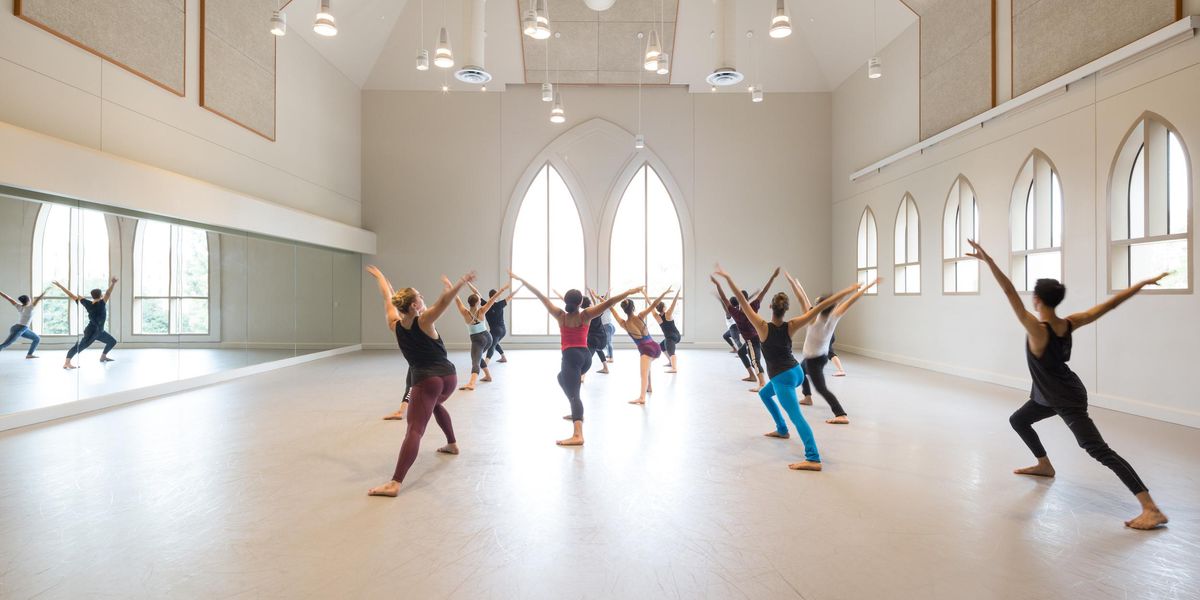Quick Q&A: John Jasperse
Fort Blossom revisited (2000/2012), which features male nudity front and center. The piece focuses not on the display of the male body but on the interaction between two dancers. There are no dance-y phrases, but rather a constant maneuvering of intimate body parts against other dancers’ bodies as well as with big, clear plastic cushions. Both the premiere in 2000 (original roles created by Miguel Gutierrez, Parker Lutz, Juliette Mapp, and Jasperse) and the reworking in 2012 (with Ben Asriel, Lindsay Clark, Erika Hand, and Burr Johnson) were met with acclaim and buzz. Dance Magazine’s Wendy Perron caught up with Jasperse last October, while he was making a piece for students at Harvard University.
Photo of John Jasperse courtesy FOCUS.
Why did you choose to revive
Fort Blossom? I started to feel a certain regret or nostalgia toward this very simple and clear statement that was in Fort Blossom, but I felt like I had never finished it.
Did you know how you wanted to rework it?
There was a sense of play that I wanted to access. There was a hint in the original version, but it never actually happened, so it was kind of exciting to feel like I managed to finish that.
How come the two women weren’t nude?
Originally I felt like all four of us would be naked, but Parker and Juliette refused to do it. That brought a lot of confusion into the process. But then I was like, OK, well that’s what it’s about. The history of the objectification of the female body by the gaze of the man as author or artist is pretty heavy. That was tricky for me to navigate anyway, so I understood why they made that decision.
Jasperse’s
Fort Blossom revisited (2000/2012). Photo by Chris Taggart, Courtesy Jasperse.
You have a definite way of organizing movement, like this fits in here and that fits in there. I wonder if you think of the body as a puzzle.
That’s part of it. Here is this body, and this part is round and that part’s concave and how the concave and the convex fit together—it’s an aesthetic construction, an estheticized puzzle. But then there’s that moment where the slightest thing shifts and suddenly you see a sexualized body and you have to ask, What was it that suddenly changed it? And then, Why suddenly when I look at it I’m really aware of things like defecating and urinating and getting sick and dying, that’s largely a medical relationship to the body? My perception continues even now to slide around.
In every art-making experience that involves the public, you’re handing over this space of perception and you aren’t in control of it. And the interesting thing is the way in which it slides from one axis to another. For some people I think the men’s duet still holds a kind of trangressive taboo, which is curious to me because we all have a butt and we all go to the bathroom. Those are universal things that bind us together. We eat and we poop. But maybe we don’t need to be so uncomfortable about it. Nobody likes changing a diaper, but there’s a way in which we can conceive of the changing of the diaper as an act of caring. That disappears once it’s no longer a baby and a mom; or maybe it returns at the end of life again. But through the middle of life, it is private and therefore tinted with shame.
In the men’s rehearsals, what was the biggest hazard?
Floor burns [laughs]. You can get a nasty floor burn, and you don’t really want one on the side of your butt.
Were your dancers cool with the nudity right from the start?
We managed to create an environment where it felt more or less normal, a non-event. If it becomes an event for us, then it becomes a big event for the public, and a big part of the piece is getting over it as an event.
Did you make adjustments with the new cast?
Oh, yeah. The men’s duet was made through improvisation. The original score was about sensation with the butt, almost like a contact improv score but with a different part of the body, opening up the comfort to the sensation shifting around in the same way the perception would. It was important for Ben and Burr to have that same kind of trajectory and not just treat it like steps. And, in the second, more playful half of the piece there’s a lot of shift in the choreography.
What do you look for in a dancer?
It helps to have some information about weight, about partnering, to be able to have a mobile spine. But I’m also interested in people who demonstrate a curiosity in their dancing. I want to work with people who are generous and humble. You feel that in the rehearsal studio, and I can see that in the way they perform.




